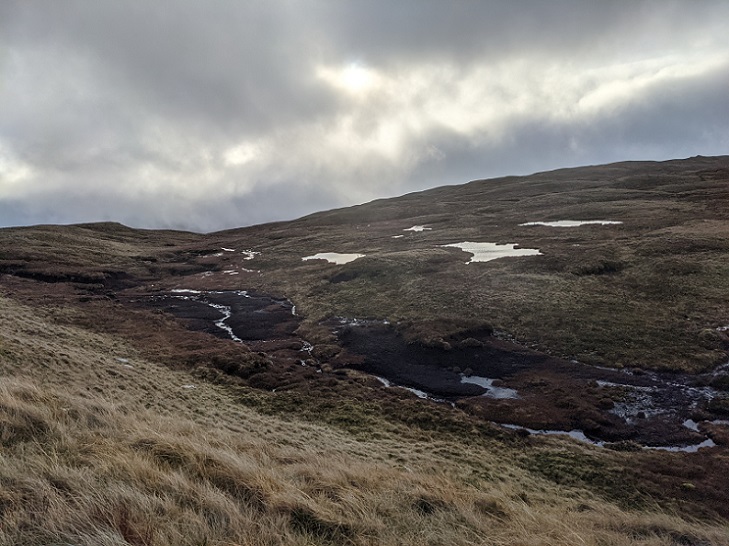
The same flock of sheep that are slowly killing off part of the Coille Coire Chuilc Caledonian Pine remnant (see here) appear to be destroying areas of peat bog on the broad summit ridge of Fiarach, the hill above. It’s on the same landholding, Auchreoch, bought by Richard Bayman Lewis of Killin for £240k in 2014.
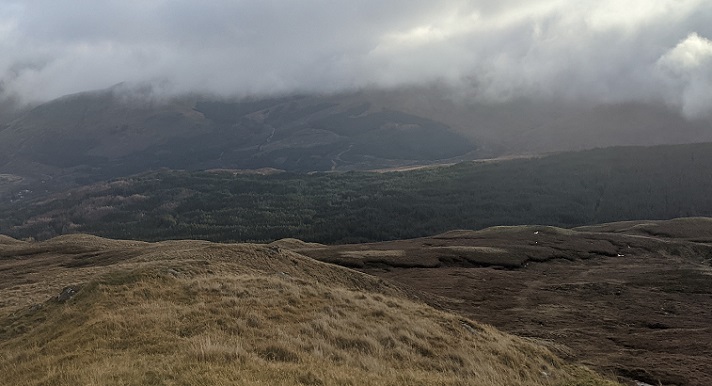
Some of the peat bog erosion on Fiarach is likely to be natural. Peat bogs tend to develop on flatter water-logged areas but as they grow they can expand onto better drained sloping ground below developing that into peat bog too. As the bog grows over hundreds of years gravity starts to play an increasing influence and the vegetation at the edge can start to breakdown. This phenomenon is visible in the line of exposed peat to the right of the ridge in the photo (although it is likely to have been made worse by grazing animals – I didn’t go to have a closer look).
But elsewhere there there is little “natural” about the erosion which is being caused by human land-use:

And how can I be so confident about this? Rarely can I recall having seen so many obvious signs of grazing animals on a peat bog.
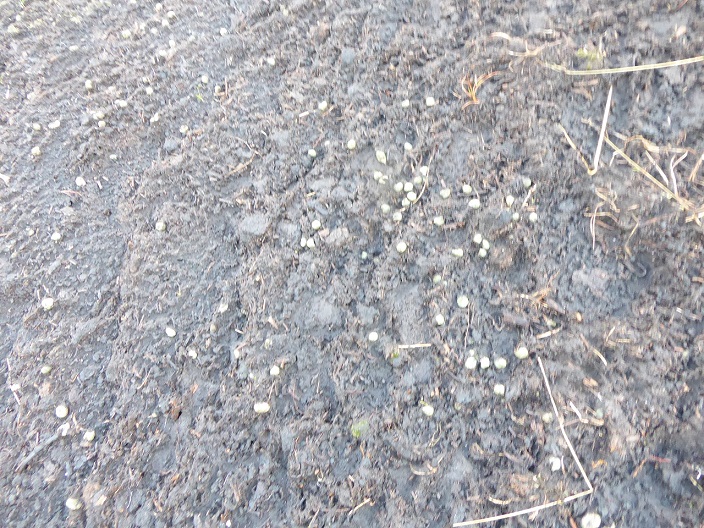
The sheep are preventing vegetation from recolonising the bare peat and damaging the peat bog further. Sheep bog might be a more appropriate term. All the trampling and browsing is causing the bog to breakdown and release carbon into the atmosphere, the opposite of what the Scottish Government claims it wants for Scotland.
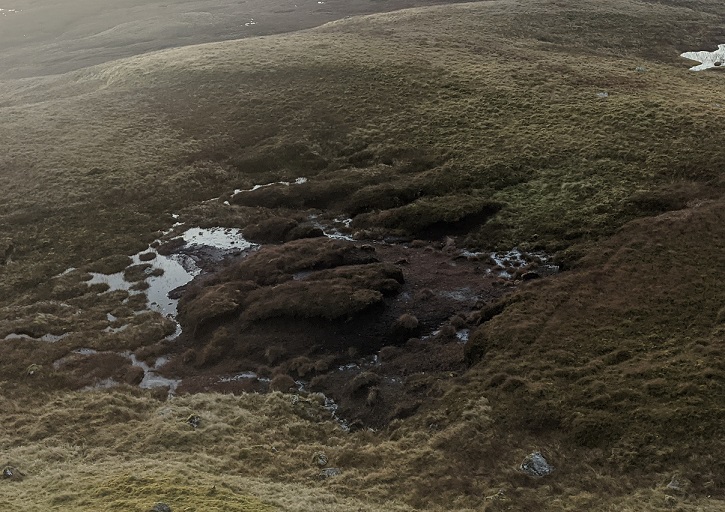
The damage that is being caused by the sheep extends beyond the Auchreoch landholding.

Most of the view in the photo is part of the neighbouring property, the Strathfillan Forest plantation. Their their owners appear to be only interested in the returns to be made from commercial forestry, not how the rest of the land is used so tolerate incursions by sheep. The deer fence which used to enclose much of the Strathfillan Forest landholding is well gone and allows sheep to wander at will:
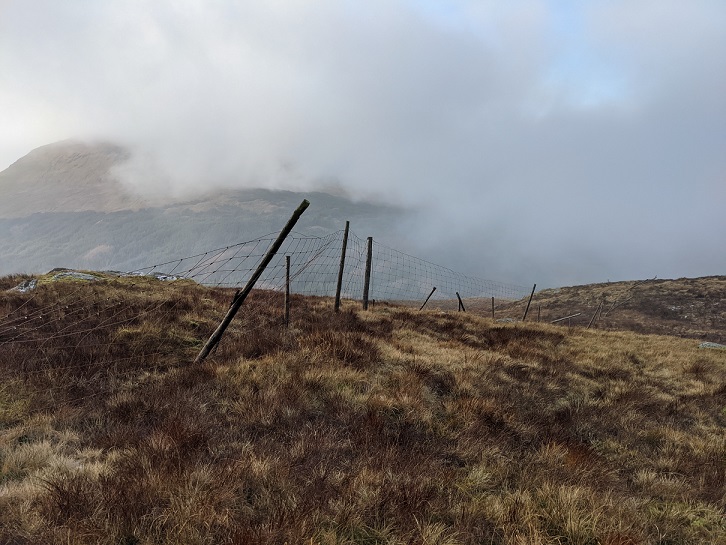
The irony is that the Scottish Government not only allows commercial forestry owners to ignore the impact of grazing once trees are established, they could well be paying for the destruction by sheep. I have checked the DEFRA Rural Payment database and while there are no records in the same name as the title deeds (Richard Bayman Lewis of Killin) there is this record:
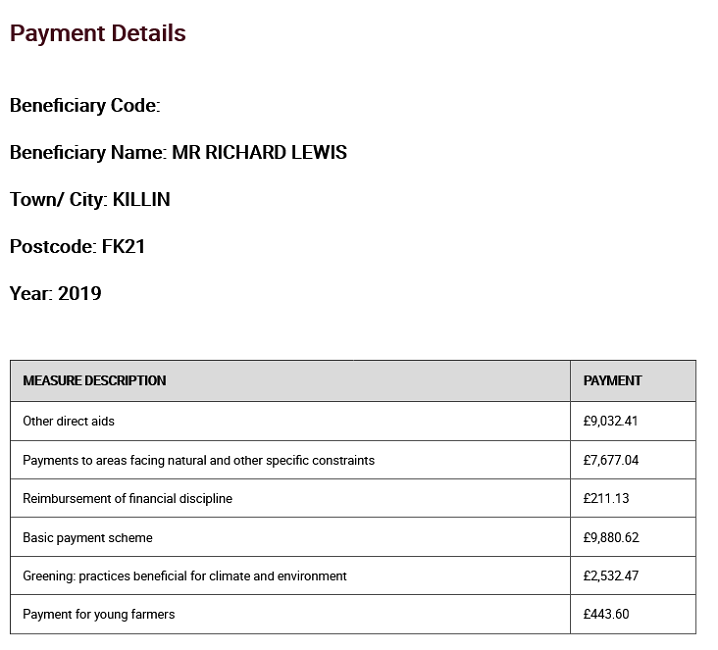
If it is the same Richard Lewis, there is no guarantee of course that the payment is for the land at Fiarach and Coille Choire Cuilc, but it could be.
The point of what follows is not to criticise Mr Lewis – people will make a living any way they can and there will be dozens of similar examples across Scotland – but to show how Scotland’s Rural Payments system subsidises landowners to do the opposite of what is in the public interest.
Consider this. If the payments are for the Auchreoch landholding, it appears that in 2019 the Scottish Government paid out almost £30k in subsidies to support sheep farming that has helped to destroy an area of Caledonian Pine Forest that we have been attempting to protect for 50 years. And not just that but the peat bog above.
To add insult to injury £2,532.47 of this was for “greening practices beneficial for climate and environment”.
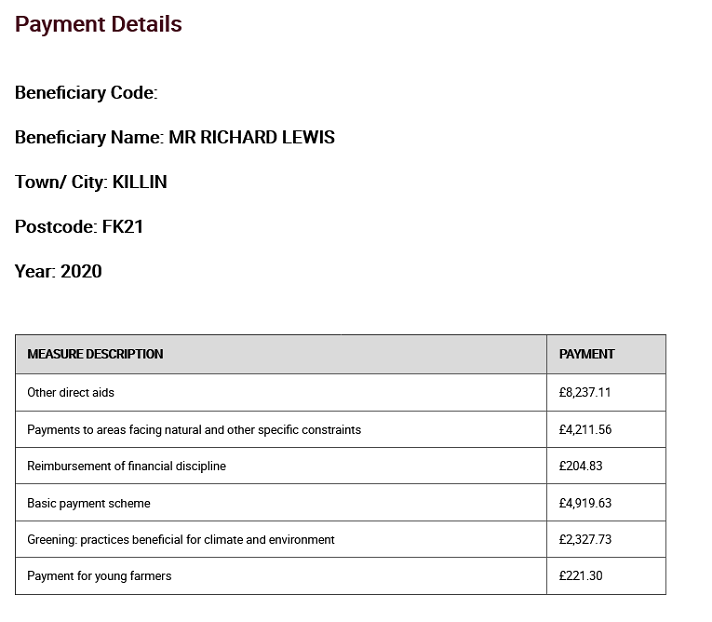
While the total payment in 2020 was almost £10k less than in 2019, it was still over £20k. If it is for Auchreoch that is a pretty good return on land that cost on £240k, c10% a year.
Imagine that Auchreoch had been bought by one of our public authorities, as I suggested in my last post, or by the local community and they had been paid this money to manage it? They could have removed the sheep, employed a part time stalker to keep the deer numbers down and let nature do the rest: the pine wood and the land above would now be regenerating. That could have been quite a tourist attraction and helped create new jobs.
What’s more, some of the £250m that the Scottish Government hasnow allocated for peat bog restoration, could have been used to repair the damaged areas on Fiarach secure in the knowledge that the money wouldn’t be wasted.
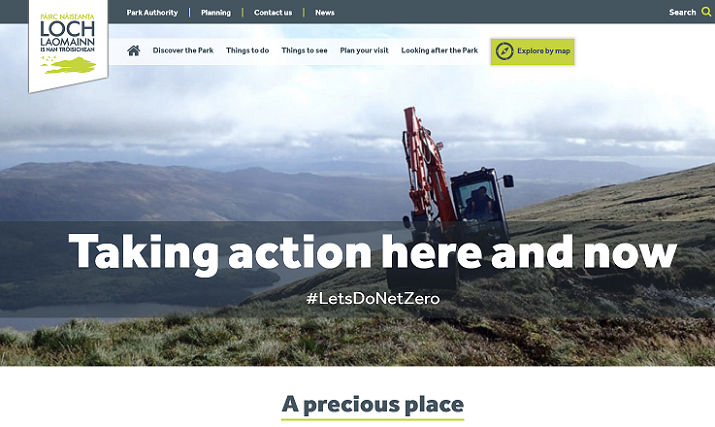
Rather than tackling the underlying problems at places like Fiarach – not easy but absolutely necessary if we are to tackle nature and climate emergencies – the Loch Lomond and Trossachs National Park Authority (LLTNPA) appears to be handing out peat bog restoration money to any landowner who will take it, with no accounting for whether this in the public interest or represents value for money. The process by which this huge subsidy is agreed appears even more secretive than the rural payments scheme.
The LLTNPA has published a short video on the peat bog restoration work that has been undertaken not far over the hill from Fiarach, in Glen Falloch (see here). It features the owner of the Glen Falloch estate, David Lowes, stating that restoring the area of peat bog above Loch Lomond was “a no brainer”. With the Scottish Government paying, it certainly was from his point of view.
But what about the public interest?
Overgrazing by sheep on the Site of Scientific Interest that covers the hills on the south side of Glen Falloch has been responsible for it being in unfavourable condition for years. Those sheep might or might not have contributed to the erosion of the peat bog featured in the video. But surely the public should have a right to know is whether we are now paying to repair damage caused by the landowner?
And looking to the future, what mechanisms have been put in place to ensure David Lowes keeps sheep, whether his or any tenant’s, off the bog from now on? And what, if anything, is there to prevent the Mr Lowes now capitalising on this public investment and selling off this bit of land for an inflated price for carbon offsetting purposes like the Ralia Estate has done with SLIPIT (see here)?
It’s time the Scottish Parliament started to scrutinise both the rural payments scheme and the peatbog restoration fund to assess how far they are meeting climate and nature objectives and represent value for money. Our National Park Authorities should have been taking a lead and doing this very work but sadly they are too in hock to landowning interests and staff on the ground not allowed to this.
I have been following your posts with interest. Especially the ones around Crianlarich. I spent my childhood around The area and know it well. Over the years the peat bogs were drained before the planting of pine trees. Before there destruction as kids we observed the natural changes that happen to peat bogs and the landscape. Sheep have been present on the hills for hundreds of years along with deer. As can been seen along the area along the length of the bypass etc the exclusion of livestock has the explosion of non native larch and spruce seedlings to blanket the ground. The areas now fenced are quickly becoming covered with a thick cover of scrub. This smothers the natural heather and heath etc. The prevalence of wild birds and the lack of wild native flowers is very noticeable now as the result of this so called re-wilding. I enclose a link to a research project that will explain the different process that occur to peat bogs. Sheep cause very little damage to the bogs.
https://eprints.whiterose.ac.uk/134824/3/Erosion%20in%20peatlands%20AAM.pdf
Hi Ali, I agree with you totally that the natural spread of sitka is becoming a major issue – because it is far less palatable to grazing animals than our broadleaves it tends to outcompete them and but in fenced areas like the Crianlarich bypass there are some natI have photos showing how heath rush, one of the important plants in peat formation, can be highly browsed in the Spring. Nickive trees regenerating naturally which is why I believe that rather than plant broadleaves in plastic tubes it would be far better to pay people to regularly remove the sitka. I have had a look at the article, which is very interesting, but it is mainly concerned about erosion processes on bare peat (rain, wind, frost, running water both overground and under in “pipes”. Its primary focus is not on the reasons why peat surfaces becomes bare to begin with but does clearly state that two major factors in this is grazing and burning (it does not mention other erosion processes such as the creation of pools and the breakdown of vegetation at the the edges of bogs under gravity). I am away at present but will try and write further about this with examples I have seen. There are people who claim that grazing is not an issue on bogs because the vegetation is so unnutritious – while its clearly true that animals will graze other areas if they have the chance – I have seen plenty of evidence of grazing sheep in peat bogs and there are people who believe the serious erosion of some of the peat bogs in the Cairngorms was caused by summer grazing. I will try and write more about this. Nick
Where I grew up on a Coastal hill farm through the 1960’s a flock of approx 1200 blackface sheep were managed across open hill, but also had access for shelter and winter grazing in amongst native Atlantic oak woodland. Cattle were also allowed free range during summers roaming the hill , churning up the ground wherever they trod. Undoubtedly this resulted in erosion and run off. However the sheep moves along slopes. They trod along ledges and created pathways. This process impeded water flow, channelling it far more horizontal, obliquely along hillsides along the well worn foot paths they stood on.
The higher places on this estate had wide expanses of peat bog. This eroded naturally with open faced banks myrad wild plants and mosses amid small waterfilled hollows. The sheep never grazed there… it was too wet underfoot. They could more easily graze where it was less waterlogged .They avoided dense woodland also. The estate’s native woodland had been extensively exploited by charcoal burning. This product was shipped south for the iron industry through the 17th and 18th centuries,( Bonawe) But within the resultant open glades this industrial process let in light . Dormant seedlings had regrown …the woodland had survived. With cattle roaming about this refertilised the woodland. The grazing pressure was balanced ..seedlings again grew to maturity and appeared to thrive.
In the 1970’s the estate changed hands. All farmed livestock were removed.The whole hil was abandoned to Vagrant deer which pushed in from surrounding estates and forestry blocks. The hillsides have become rank and overgrown. The ungrazed tussocks, and tangled heather and bracken make leisure walking anywhere very hard indeed at any time of year. Any tree seedlings that might have emerged due to reduction in sheep grazing pressure were instead nibbled off by deer. In any case they would have been overshadowed and their root systems starved of nutrients long before reaching a viable height. 60 years after i first knew it the estates unmanaged hillsides and the woodland are dying now. ( Criss -crossed by quad bike tracks made by those wishing to travel and hunt easily without responsibility.) Mature native trees are isolated and many are dead now. Birds which fed on insects in dung and spread seeds,which once found worms and other food among previously healthy grasses, these species are largely vanished elsewhere.
I suspect the average countryside-aware lifespan for people nowadays is far to short. They will hardly spot the result of changes caused by different conservation experiments and successive agricultural regimes. Those of us who have lived longer may question why the “science” constantly promotes such vast swings from one conservation extreme to another.
When Professor John Raven with Max Walters wrote his book “Mountain flowers” first Published in 1956, he could study the plant life that had emerged on upland landscapes through 100’s of years of grazing by sheep. Wild flowers only found far further south on (grazed) alpine pastures were found thriving on high places along the west coast of Scotland. With the removal of close grazing by sheep the habitat these alpine plants lichens and mosses required has all but disappeared now. Today’s environmentalists could be advised to become much more vigilant – far more careful what knee-jerk conclusions others arrive at when actual environmental cost for low density sheep farming across marginal Highland land is thrown into question. There is no ‘one-size – fits- every-situation’ correct answer. .
Tom, thank goodness someone else can see what long term damage can be caused by doing the balance of things. This is what has happened and is accelerating around Crianlarich and surrounding areas and that is only in my 70 years growing up there.